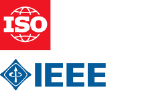Тезис
IEC/IEEE 80005-1:2019 describes high-voltage shore connection (HVSC) systems, onboard the ship and on shore, to supply the ship with electrical power from shore. This document is applicable to the design, installation and testing of HVSC systems and addresses: - HV shore distribution systems, - shore-to-ship connection and interface equipment, - transformers/reactors, - semiconductor/rotating frequency convertors, - ship distribution systems, and - control, monitoring, interlocking and power management systems. It does not apply to the electrical power supply during docking periods, for example dry docking and other out of service maintenance and repair. Additional and/or alternative requirements can be imposed by national administrations or the authorities within whose jurisdiction the ship is intended to operate and/or by the owners or authorities responsible for a shore supply or distribution system. It is expected that HVSC systems will have practicable applications for ships requiring 1 MVA or more or ships with HV main supply. Low-voltage shore connection systems are not covered by this document. This second edition cancels and replaces the first edition published in 2012. This edition constitutes a technical revision. This edition includes the following significant technical changes with respect to the previous edition: a) modification of 4.1, Figure 1: transformer on ship is optional, earthing switches on ship removed; b) 4.2.2 and new item 11.3: alternative procedure of periodic testing added; c) modification of 4.9: - minimum current value in the safety circuits shall be 50 mA; - opening of safety loop shall cause the automatic opening of ship and shore HVSC circuit breakers in a maximum time of 200 ms; d) modification of 5.2: added Figure on harmonic contents; e) modification of 6.2.3: – earthing transformer with resistor can be used also on the secondary side; – neutral earthing resistor rating in amperes shall be minimum 25 A, 5 s; f) modification of all annexes: the safety circuits shall be mandatory; g) modification of A.2.1: a metallic shield shall be installed at least on the power cores or common on pilot wires; h) modification of B.7.2.1: new safety circuit introduced: single line diagram and description; i) modification of C.4.1: SLD for cruise ships was updated, also the safety circuits to be coherent with main body, IEC symbols and introduced more details about the control socket-outlets and plugs manufacturer type; j) modification of C.7.3.1: - shore power connector pin assignment is updated; - all cruise ships shall use 4 cables in all cases; k) added D.6.1: the supply point on shore can be fixed or movable; l) modification of D.7.3.2: the voltage used in the pilot circuit for container ships shall be less than 60 V DC or 25 V AC. m) added D.8.6 and D.9.3.1: automatic restart and synchronization alternatives; n) Annex E set to informative; o) Annex F set to informative.
Общая информация
-
Текущий статус: ОпубликованоДата публикации: 2019-03Этап: Рассылка краткого отчета о пересмотре [90.60]
-
Версия: 2
-
Технический комитет :ISO/TC 8/SC 3ICS :47.020.60
- RSS обновления
Изменения
Поправки принимаются, когда обнаруживается, что в существующий документ по стандартизации необходимо добавить новый материал. В них также могут быть включены редакционные или технические исправления, которые необходимо внести в существующий документ.
Amendment 1
Версия 2022
Amendment 2
Версия 2023
Жизненный цикл
-
Ранее
ОтозваноISO/IEC/IEEE 80005-1:2012
-
Сейчас
ОпубликованоIEC/IEEE 80005-1:2019
Стандарт, который пересматривается каждые 5 лет
Этап: 90.60 (Hа стадии пересмотра)-
00
Предварительная стадия
-
10
Стадия, связанная с внесением предложения
-
20
Подготовительная стадия
-
30
Стадия, связанная с подготовкой проекта комитета
-
40
Стадия, связанная с рассмотрением проекта международного стандарта
-
50
Стадия, на которой осуществляется принятие стандарта
-
60
Стадия, на которой осуществляется публикация
-
90
Стадия пересмотра
-
95
Стадия, на которой осуществляется отмена стандарта
Изменения
Содержат дополнительные материалы; доступны для приобретения; не включены в текст действующего стандарта.ОпубликованоIEC/IEEE 80005-1:2019/Amd 1:2022
ОпубликованоIEC/IEEE 80005-1:2019/Amd 2:2023
-
00


